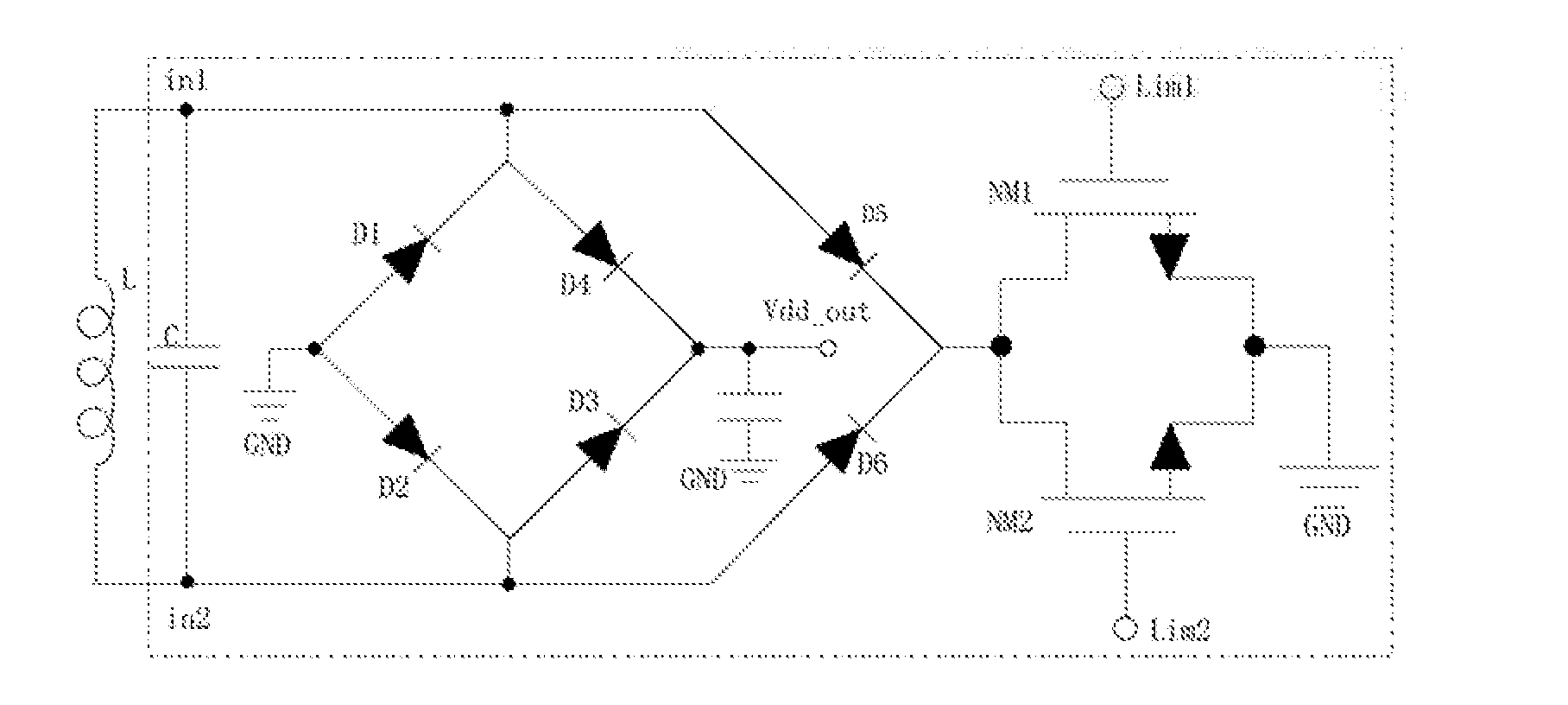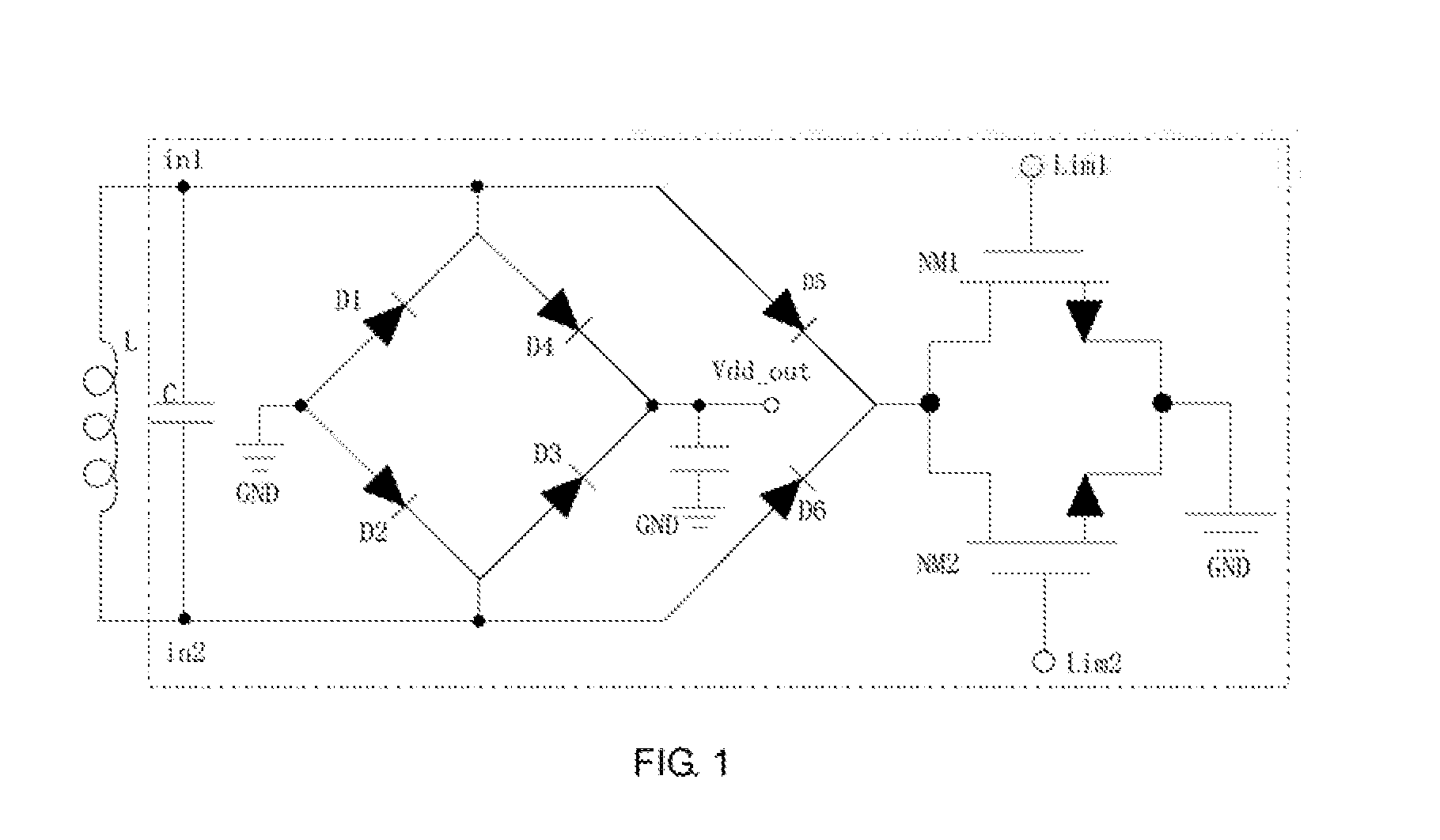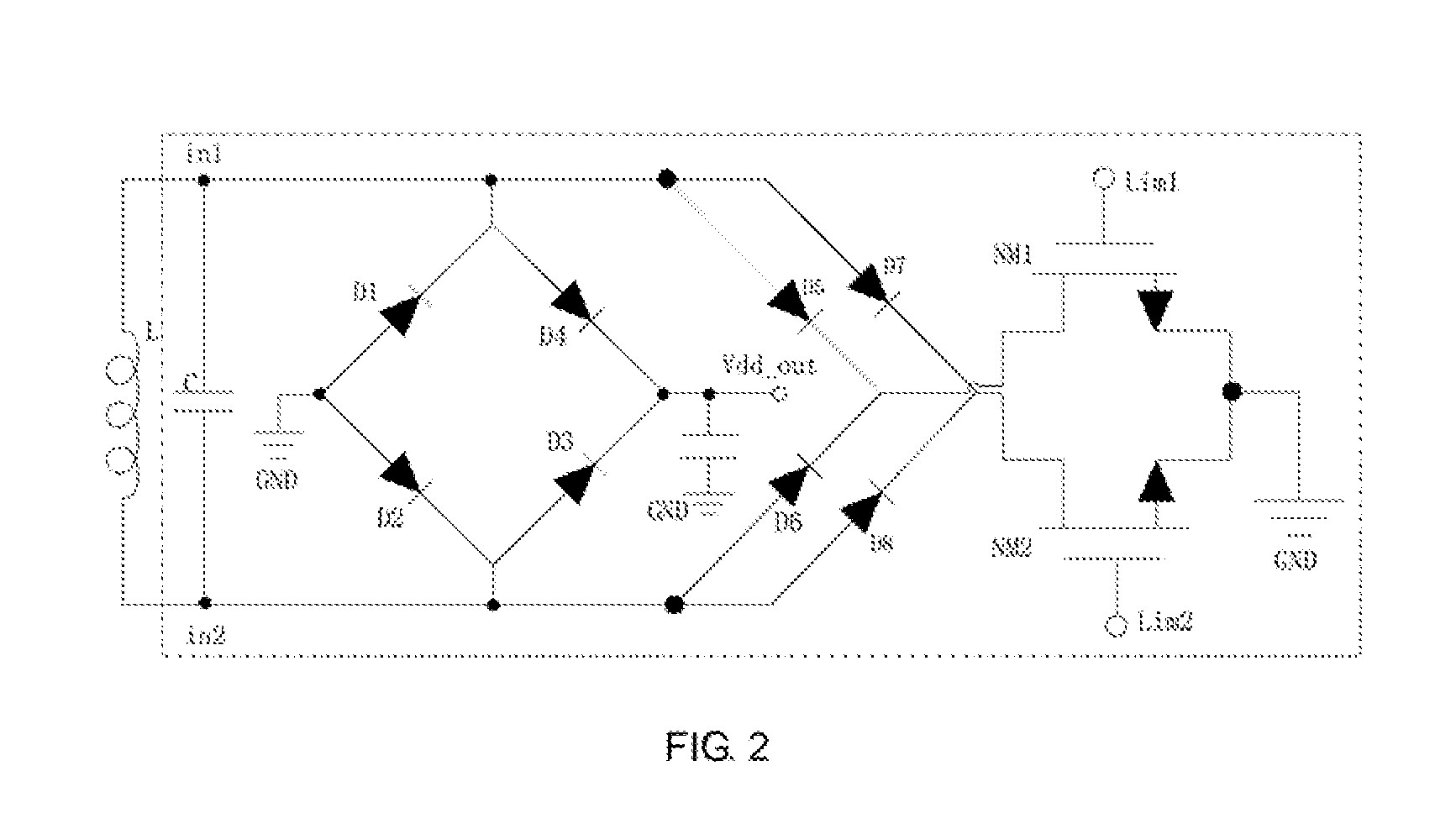Rectifier and limiter circuit having a plurality of time constants and passive radio frequency tag
a limiter circuit and time constant technology, applied in the field of radio frequency identification, can solve the problems of inability to communicate, no longer function of rfid tag, permanent damage to the resistor, etc., and achieve the effect of increasing the read-write distance of the tag and avoiding saturation of reception at the card reader sid
- Summary
- Abstract
- Description
- Claims
- Application Information
AI Technical Summary
Benefits of technology
Problems solved by technology
Method used
Image
Examples
embodiment 1
[0035]FIG. 1 is a general structure diagram of Embodiment 1 of a circuit according to the present invention. A rectifier and limiter circuit having a plurality of time constants described in the present invention includes:
[0036]a resonant capacitor C, which is connected, between a first antenna terminal in1 and a second antenna terminal in2, in parallel to a resonant inductor L, and configured to form a resonant circuit together with the resonant inductor L, receive an external electromagnetic field and couple the external electromagnetic field to a rectifier circuit;
[0037]a rectifier circuit, the input terminal of which is connected to the first antenna terminal in1 and the second antenna terminal in2 and configured to convert AC power, to which the resonant circuit is coupled, into DC power and output the DC power to an external load circuit, and meanwhile, one output terminal of which is grounded by two discharge paths connected in parallel and configured to output charge to the ...
second embodiment
[0043]The structure of the second rectifier branch is as shown in FIG. 2. In this embodiment, the second rectifier branch is a fifth diode D5 and a sixth diode D6 connected between the first antenna terminal in1 and the second antenna terminal in2, as well as a seventh diode D7 and an eighth diode D8. The cathode terminals of the fifth diode D5 and the sixth diode D6 are connected to each other and to the input terminal of the first discharge path, and the cathode terminals of the seventh diode D7 and the eighth diode D8 are connected to each other and to the input terminal of the second discharge path.
[0044]With respect to the structure of the first embodiment as shown in FIG. 1, the structure of the second embodiment of the second rectifier branch as shown in FIG. 2 improves the flexibility of further controlling the amplitude limitation and current discharge. Corresponding to the leakage discharge circuits controlled by the control signals having different time constants, the siz...
third embodiment
[0045]The structure of the second rectifier branch is as shown in FIG. 3. The second rectifier branch is a third N-type MOS transistor NM3 and a fourth N-type MOS transistor NM4 connected between the first antenna terminal in1 and the second antenna terminal in2. The gate and drain of the third N-type MOS transistor NM3 are respectively connected to the first antenna terminal, the gate and drain of the fourth N-type MOS transistor NM4 are respectively connected to the second antenna terminal, and the source of the third N-type MOS transistor NM3 are connected to the source of the fourth N-type MOS transistor NM4 and to the input terminals of the two discharge paths.
PUM
 Login to View More
Login to View More Abstract
Description
Claims
Application Information
 Login to View More
Login to View More - R&D
- Intellectual Property
- Life Sciences
- Materials
- Tech Scout
- Unparalleled Data Quality
- Higher Quality Content
- 60% Fewer Hallucinations
Browse by: Latest US Patents, China's latest patents, Technical Efficacy Thesaurus, Application Domain, Technology Topic, Popular Technical Reports.
© 2025 PatSnap. All rights reserved.Legal|Privacy policy|Modern Slavery Act Transparency Statement|Sitemap|About US| Contact US: help@patsnap.com



